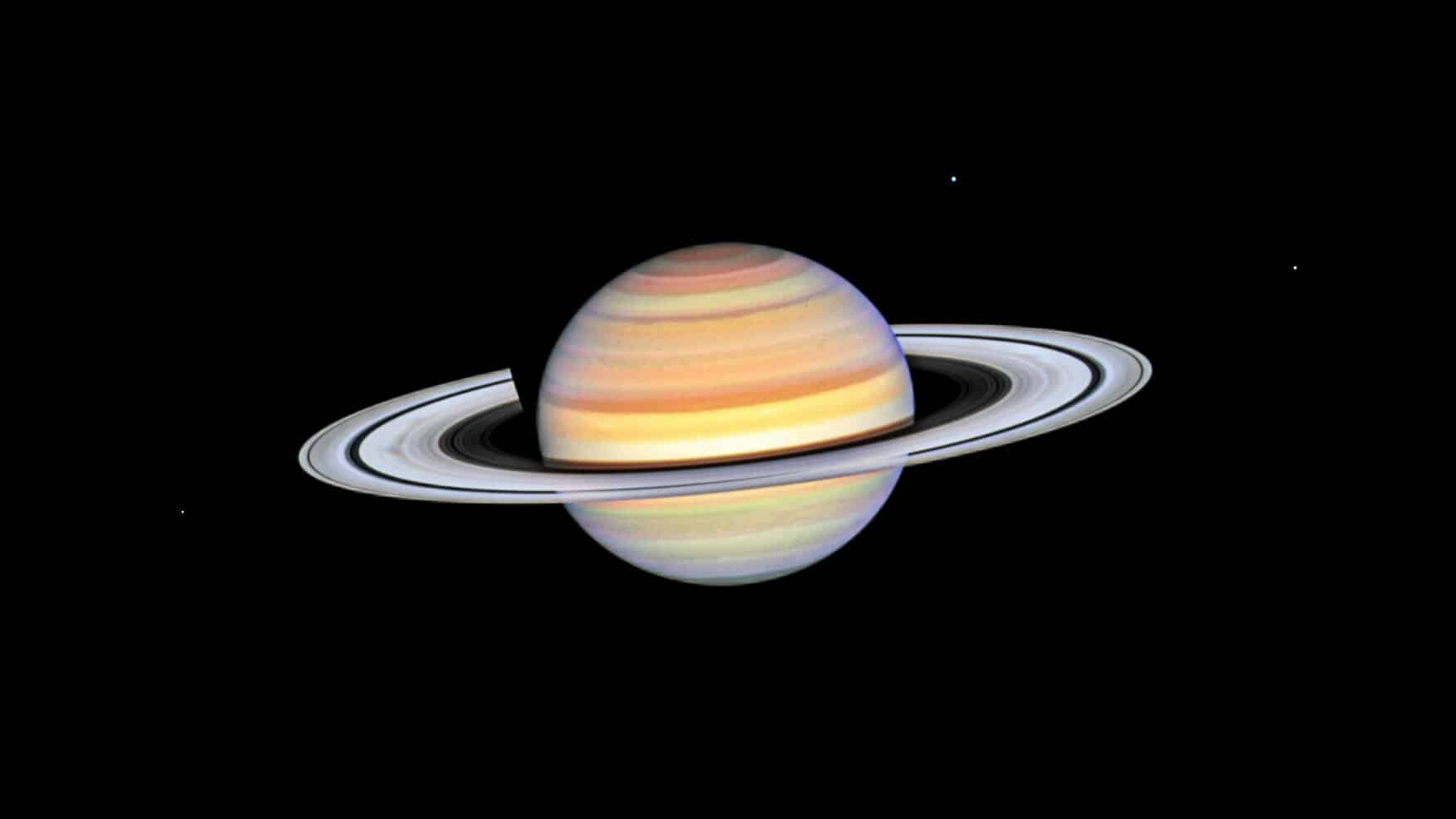Published October 12, 2023
10 min read
Scientists recently discovered something surprising on the far side of the moon: a hot spot in a collapsed, long-extinct volcanic caldera. It was being warmed by radioactive elements in the granite that formed in the solidified magma chamber below.
The surprise wasn’t the granite’s radioactivity—ordinary countertop granite on Earth is a little radioactive. The real shock was the presence of granite at all. This type of rock forms in abundance on Earth only thanks to our planet’s liquid water and active plate tectonics; the moon lacks both.
In fact, our planet is something of a geological oddball given what we know about our solar system neighbors. Granite isn’t the only rock that’s ordinary on Earth but rare on other worlds. These missing rocks can add up to entire missing landscapes: beyond Earth, you’d have a tough time finding anything like the limestone columns of Hạ Long Bay, a stratovolcano like Mt. Fuji, or even quartz sand dunes.
Scientists discuss the ordinary rocks found on Earth’s surface that are special, rare, or nonexistent elsewhere in the solar system—based on our current knowledge. If the moon can still surprise geoscientists even after several visits, the geologies of alien worlds that we’ve only ever explored with rovers or probes or glimpsed from orbit or through telescopes could certainly do the same.
Granite and other rocks made from recycled magma
Igneous rocks, which form from magma (which is called lava when it erupts on the surface), aren’t anything special in our solar system. The surfaces of the moon, Mars, Mercury, Venus, and even Jupiter’s angry little moon Io are all overwhelmingly volcanic. But ordinary magma doesn’t usually make granite—it has to be recycled first.
Fresh from the interior of a planet, magma usually forms a blackish rock called basalt—not granite, says planetary geoscientist Harry McSween of the University of Tennessee. Granite, which usually forms from magmas that cooled and partially re-melted over and over—the minerals like quartz in granite melt easily, so they liquefy and separate from the leftover solid as rocks start to melt. The resulting recycled magmas form many different types of granite and granite-like rocks, which make up most of the Earth’s continental crust.
On Earth, this recycling process usually happens at subduction zones, where the oceanic crust slides beneath the continental crust, warming as it goes down. And since wet rock is easier to melt, subduction bringing water down into the Earth helps the crust melt easily.
“Earth, with plate tectonics and water, has this easy way of making granite all the time,” says planetary scientist Matthew Siegler of the Planetary Science Institute in Tucson, Arizona, who helped spot the granite on the moon. “But none of the other planets have that.”
That’s why Mercury, Venus, Mars, and even Jupiter’s volcanic moon have plenty of basalt but little granite. It’s also why off-planet volcanoes tend to look more like pancakes than Mt. Fuji. Molten basalt is runnier than recycled magma and spreads out into broad “shield” volcanoes like Mars’s Olympus Mons.
Sandstone and other rocks formed in water
Our blue planet’s abundant water makes it unique in our solar system. And water doesn’t just help melt rocks on Earth, it also helps to stick them together.
Sedimentary rocks like sandstones form when preexisting rocks break down into bits that pile up and stick together to form a new rock. Pressure helps this process along, but it’s not enough on its own—“you need water to help cement together the different particles that are coming together,” says Mars geologist Kirsten Siebach of Rice University.
This link to water is why alien sedimentary rocks are rare. But they do exist. Certain asteroids, like Ryugu and Bennu, are rubble piles, essentially a strange space conglomerate—a type of sedimentary rock—where boulders and particulates are held gravitationally, says planetary scientist Bethany Ehlmann of Caltech. Mars also boasts sedimentary rocks—a dazzling variety of them, left behind from its warmer, wetter past. The red planet’s sedimentary rocks mostly formed when water helped glue together sediments that accumulated in ancient rivers, lakes, and sand dunes.
Still, says Siebach, “because of granite, actually, the sedimentary rocks on Earth that we are most accustomed to are still unique to Earth—across the board.”
Take sandstone, for instance. Earth’s sands are often white and its sandstones are usually full of quartz because the mineral is common in granite and it’s very hard to degrade, so it builds up in sediments. Mars’s sandstones have completely different ingredients. Excluding fossils, McSween says, a quartz-rich sandstone is probably one of the most Earth-specific rocks imaginable—creating one would require plate tectonics, erosion, and water.
Limestone and other rocks made by life
Of course, the Earth’s plate tectonics and water are not the only things to set it apart. Our home planet is the only one to host life—and the rocks here show it.
Take limestone, a chalky rock rich in minerals called carbonates. Limestone is common on Earth because life produces it en masse: the rock forms when shells and skeletons of ocean creatures, especially from coral reefs, pile up on the seafloor as the organisms die. When these remains cement together, they form enormous blocks of limestone.
Life speeds up limestone formation so much that “even geologists sometimes think that limestone can only form with life,” says Siebach. But lifeless processes can make carbonate-rich rocks like limestone, too. The key ingredients are a bit of shallow, warm water that’s not too acidic and some carbon dioxide — both of which existed on Mars in the past.
Mars’s warmer, wetter past makes it the second-best place in the solar system to find carbonates. But without life to mass-produce these minerals, “we don’t see them in large quantities the same way that we would if you drained Earth’s oceans,” says Ehlmann.
Small amounts of carbonate minerals have also been found on asteroids, including the near-Earth asteroid Bennu and the dwarf planet Ceres.
Marble and other rocks transformed by heat and pressure
Marble would be very strange to find in space, and not only because it starts off as limestone. It’s a metamorphic rock, which means it becomes something new under extreme heat and pressure without melting.
On Earth, metamorphism usually happens slowly and deep underground. The heat and pressure at depth transform rocks and minerals, which is how graphite becomes diamond and limestone becomes marble. But on other worlds, it’s more typical to find metamorphic rocks forged in the split-second shock of a meteoroid impact.
“The rocks are exposed to very high pressures and high temperatures, but only fleetingly,” McSween says.
Shock metamorphism has happened often on Mars, but there’s also evidence for metamorphism that’s a bit like a cooler, gentler version of what can happen on Earth. Ehlmann and her team previously identified metamorphic rocks on Mars that she thinks could have formed when hot groundwater circulated through rocks buried underground, a relatively low-temperature, low-pressure process.
The surface of Venus, meanwhile, is hot enough to melt lead—hot enough that McSween thinks most of its surface rock should have metamorphosed. But the atmospheric pressure, while crushing by human standards, can’t compare to the weight of even just a few kilometers of rock overhead deep in the Earth.
Ultimately, if we could drill deep enough, we’d actually find metamorphic rocks on every planet, says McSween. But the Earth is special. Thanks to plate tectonics, rocks from the deep interior and the surface trade places all the time, substantially expanding our planet’s unusual geological repertoire.
On Earth, there’s an efficient way “to get those rocks up to the surface and cycle surface rocks down to be metamorphosed,” McSween says. “And we really don’t have any process that does that on other planets.”
Note: This article have been indexed to our site. We do not claim legitimacy, ownership or copyright of any of the content above. To see the article at original source Click Here













